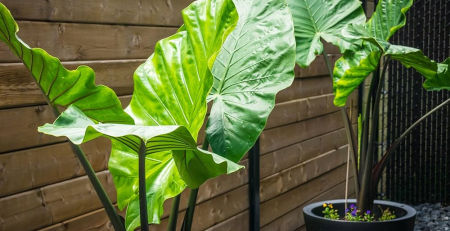How to Cut Tulips So They Regrow
Introduction
Tulips are one of the most beloved spring flowers, celebrated for their vibrant colors and elegant shapes. If you’re wondering how to cut tulips so they regrow, you’re not alone! Many gardening enthusiasts like yourself want to enjoy these stunning blooms season after season. In this guide, we’ll explore effective techniques for cutting tulips properly, how to care for them after cutting, and tips for ensuring they regrow beautifully.
Step-by-Step Guide to Cutting Tulips
Understanding how to cut tulips so they regrow involves a few key steps that are simple yet essential. Here’s a detailed step-by-step process to follow:
1. Gather Your Tools
Before you start, ensure you have the following tools ready:
- Sharp scissors or pruning shears: A clean cut helps prevent damage to the plant.
- Clean water: This is essential for hydrating your cut tulips.
- A vase or container: Choose a vase that can accommodate the length of your tulips.
2. Choose the Right Time
Timing is crucial. You should cut tulips when they are just beginning to open but still in tight bud form. This ensures that they will last longer in a vase and have enough energy to regrow. If you want to know more about timing, refer to our article on when to separate seedlings for insights into plant care.
3. Cut at the Right Angle
When cutting, hold the stem at a 45-degree angle. This angle increases the surface area for water absorption, allowing your tulips to stay hydrated longer. It also helps prevent the stem from sitting flat on the bottom of the vase, which can block water uptake.
4. Remove Excess Leaves
Trim any leaves that will sit below the waterline in your vase. This prevents rotting and bacteria growth, which can harm your tulips and hinder their ability to regrow. If you’re also working with other plants, you might find our article on common garden pests helpful for understanding how to protect your flowers.
5. Place in Water Immediately
Once you’ve cut your tulips, place them directly in clean water. Ideally, use room temperature water to promote quick hydration. For a detailed look at keeping your plants healthy, check out how to shine plant leaves naturally.
6. Change the Water Regularly
To maintain the health of your tulips, change the water every few days. This prevents the buildup of bacteria and keeps your flowers fresh longer.
7. Aftercare for Tulips
After you’ve cut and placed your tulips in water, it’s essential to care for them properly. Make sure they’re in a cool, indirect light spot. Avoid direct sunlight, which can cause the blooms to wilt prematurely.
How to Know When to Regrow Tulips

Now that you’ve successfully cut your tulips, you might be asking yourself: when is the best time to regrow them? The optimal time to plant tulip bulbs is in the fall, about six weeks before the ground freezes. This timing allows the bulbs to establish roots before winter.
You can also allow the cut tulips to continue growing in their vase until they start to fade. Once they begin to wilt, you can cut them back and prepare to plant them in your garden or a pot for the next season.
Easy Tulips to Regrow
While most tulip varieties can regrow, some are particularly easy to manage. Here are a few that thrive when you follow the right cutting and care techniques:
- Darwin Hybrid Tulips: These tulips are renowned for their resilience and bright colors. They often come back year after year with minimal care.
- Parrot Tulips: With their frilled and feathered petals, Parrot Tulips add a unique touch to any garden. They can regrow if you follow the correct cutting methods.
- Triumph Tulips: Known for their sturdy stems and large blooms, Triumph Tulips are easy to grow and maintain.
- Fringed Tulips: These tulips have fringed edges and a unique appearance. They often perform well in various climates.
Additional Varieties to Consider
When planning your garden, consider mixing different types of tulips for a stunning display. For example, you can pair Fringed Tulips with Triumph Tulips to create a beautiful contrast in colors and shapes. Check out our article on flowers that look like tulips for more inspiration on creating a vibrant garden.
When to Regrow Your Tulips
As previously mentioned, the best time to regrow tulips is in the fall. However, if you’re looking to extend their blooming period in your home, consider the following:
- Spring Planting: If you want to regrow tulips from cuttings, you can also try planting them in a pot indoors during early spring. Just be sure to provide sufficient light and water.
- Post-Bloom Care: After your tulips bloom, allow the foliage to die back naturally. This process helps the bulbs store energy for next season.
Choosing a Pot or Container
If you’re planning to grow tulips in pots, selecting the right container is essential for their growth. Here are some tips for choosing a suitable pot:
- Size Matters: Choose a pot that is at least 12 inches deep. Tulip bulbs need enough space to grow and develop strong roots.
- Drainage: Ensure your pot has drainage holes. Good drainage prevents root rot, a common problem for container plants.
- Material: Terracotta pots are a popular choice because they allow for airflow, but any material will work as long as drainage is adequate.
- Soil Quality: Use a well-draining potting mix. You can enrich it with organic materials, like worm castings. This promotes healthy growth and sustains the tulips over time.
Different Ways to Transplant Tulips

When learning how to cut tulips so they regrow, you may want to explore different transplanting methods. Here are some effective techniques:
1. Traditional Method
The traditional method involves removing the tulip bulbs from the ground after the foliage has died back. Store them in a cool, dry place until you’re ready to replant in the fall.
2. Container Method
If you cut tulips and want to transplant them directly into a pot, follow these steps:
- Select a healthy bulb and ensure it has roots attached.
- Plant the bulb at a depth of about 6 inches in your chosen pot.
- Water thoroughly and place in indirect sunlight until the bulbs start to sprout.
3. Division Method
If you notice that your tulip bulbs have multiplied, you can divide them for replanting:
- Wait until the foliage has completely died back.
- Carefully dig up the bulbs, separating them into individual bulbs.
- Replant them in the fall as you would normally.
Recommended Care Tips for Regrowing Tulips
To ensure your tulips thrive after cutting, keep these care tips in mind:
- Watering: Ensure consistent watering, especially during dry spells. Keep the soil moist but not soggy.
- Fertilizing: Use a balanced fertilizer or organic compost during the growing season to promote healthy blooms.
- Mulching: Apply a layer of mulch around your tulips to retain moisture and regulate soil temperature.
- Pest Control: Keep an eye out for common garden pests, such as aphids and slugs.
How to Prevent Diseases in Tulips
While cutting and regrowing tulips can be rewarding, it’s essential to keep an eye out for diseases that can affect their health. Here are some common diseases to watch for:
- Tulip Fire: This fungal disease results in brown spots on the leaves and can spread quickly. To prevent this, ensure proper air circulation and avoid overhead watering.
- Botrytis Blight: Another fungal infection that causes gray mold, Botrytis can be managed by removing affected leaves and ensuring good airflow.
- Root Rot: Caused by overwatering or poor drainage, root rot can lead to the death of the plant. Always use pots with drainage holes and allow the soil to dry out between waterings.
If you’re interested in organic methods of preventing diseases, read about mushroom compost benefits for ideas on enhancing soil health.
Enhancing Tulip Growth with Soil Enrichment
For tulip enthusiasts wanting to maximize bloom health and regrowth, enriching the soil with organic matter like worm castings at the beginning of the season is a smart choice. Compost not only boosts soil nutrients but also helps tulips develop stronger stems and brighter blooms. Opt for a balanced fertilizer, avoiding high-nitrogen types that prioritize foliage over flowers. With proper soil care and timely pruning, you can ensure that your tulips are primed for stunning, vibrant growth year after year.
Final Thoughts on Cutting Tulips for Regrowth
Mastering how to cut tulips so they regrow can bring lasting beauty to your garden each spring. By choosing the right timing, using proper cutting techniques, and giving them a bit of extra care, you’re setting your tulips up to thrive year after year. Remember to monitor your plants for common issues like pests or overwatering, as these small steps can make a significant difference in maintaining their health and vibrancy.
With thoughtful care and attention, your tulips can become a reliable source of color and charm, filling your garden with stunning blooms every season. For more tips on maintaining healthy plants and gardening essentials, explore our other articles on seasonal plant care and container gardening.
Happy gardening, and may your tulips bring joy to your home and garden!













Leave a Reply